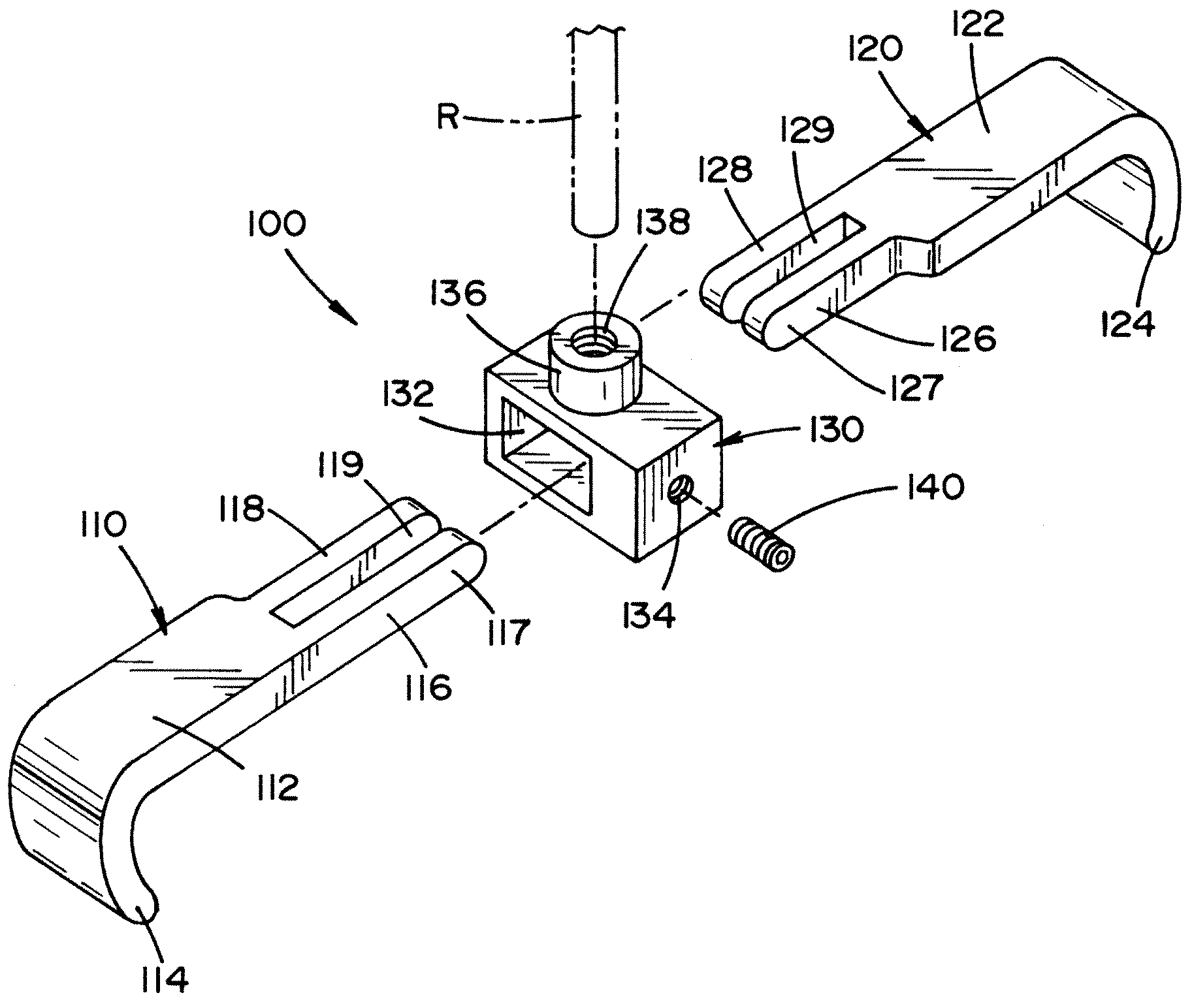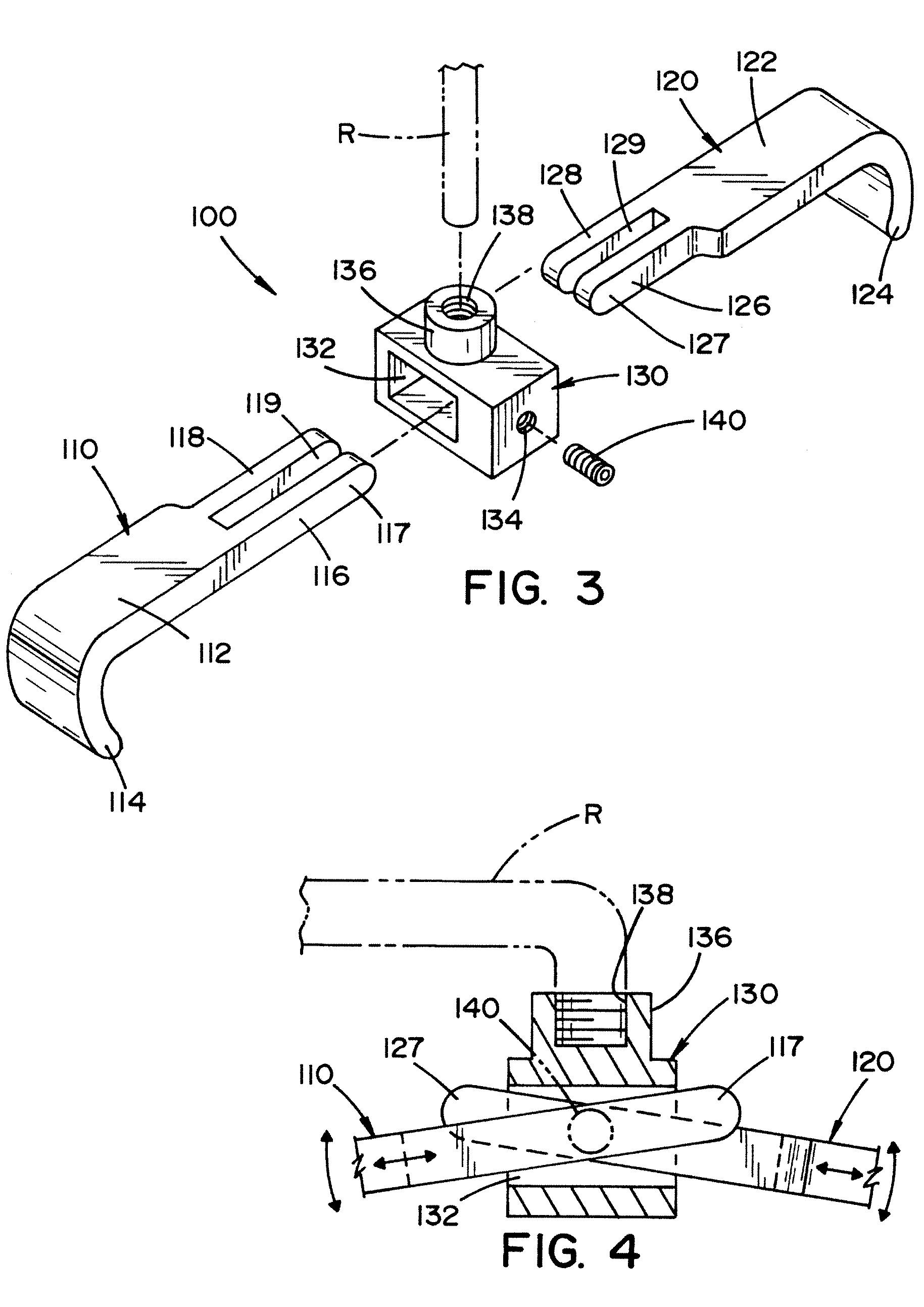Vertebral pars interarticularis clamp a new spine fixation device, instrumentation, and methodology
a technology of interarticular and spine, which is applied in the field of vertebral pars interarticular clamp a new spine fixation device, instrumentation, and methodology, can solve the problems of increasing procedure time and/or inconvenience for patients
- Summary
- Abstract
- Description
- Claims
- Application Information
AI Technical Summary
Benefits of technology
Problems solved by technology
Method used
Image
Examples
Embodiment Construction
[0081]Referring now to the preferred embodiment of the drawings, wherein the showings are for the purpose of illustrating a preferred embodiment of the invention only and not for the purpose of limiting the invention, FIGS. 1-15 illustrate a spinal implant 100 in accordance with the present invention. As best illustrated in FIG. 1, the spinal implant is designed to be at least partially secured to the posterior elements of a spinal vertebra V. In particular, the spinal implant, as shown in FIG. 1, is secured to the vertebra V within the interval between the superior margin of the lamina of the vertebra and the lateral margin of the pars interarticularis portion of the vertebra. As can be appreciated, the spinal implant can be designed to span the full length of the pars interarticularis, a portion of the pars interarticularis, or connect to more than one vertebra. As best illustrated in FIG. 1, one or more spinal implants 100 can be secured to a vertebra.
[0082]As illustrated in FIGS...
PUM
 Login to View More
Login to View More Abstract
Description
Claims
Application Information
 Login to View More
Login to View More - R&D
- Intellectual Property
- Life Sciences
- Materials
- Tech Scout
- Unparalleled Data Quality
- Higher Quality Content
- 60% Fewer Hallucinations
Browse by: Latest US Patents, China's latest patents, Technical Efficacy Thesaurus, Application Domain, Technology Topic, Popular Technical Reports.
© 2025 PatSnap. All rights reserved.Legal|Privacy policy|Modern Slavery Act Transparency Statement|Sitemap|About US| Contact US: help@patsnap.com



